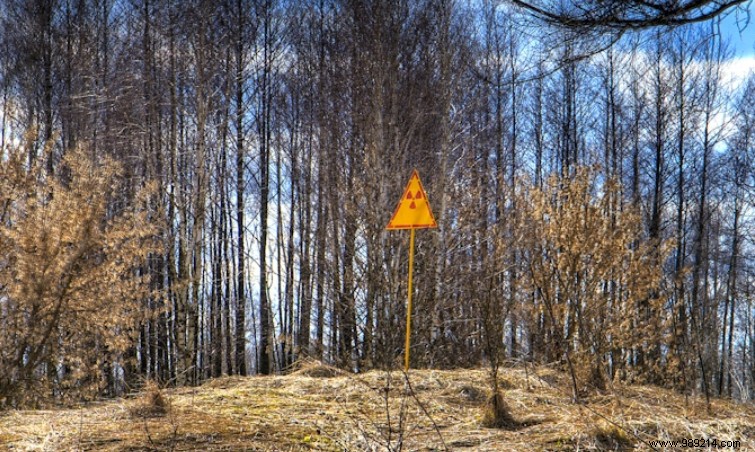Exposure to radiation from the Chernobyl disaster did increase the risk of certain mutations linked to thyroid cancer. On the other hand, it did not cause new mutations in the DNA of children born to parents who participated in the cleanup of the site after the accident.
Researchers have recently looked into the genetic legacy of the Chernobyl disaster, recognized as the worst nuclear accident on record. One group focused on genetic changes made in thyroid tumors developed in people exposed to radioactive iodine released during the disaster. A second team focused on the children of those assigned to clean up the site.
Epidemiological research has shown that people exposed to the Chernobyl accident had a higher risk of developing a particular type of thyroid cancer called papillary cell carcinoma. thyroid . That said, if we know that radiation can damage our DNA, the precise nature of this damage remains complicated to understand.
In this new study, researchers analyzed tissue from thyroid carcinoma tumors held in the Chernobyl Tissue Bank. They compared the genetics of tumors from 359 people exposed to Chernobyl radiation before adulthood with those of tumors from people from the same region born more than nine months after the accident (thus not directly exposed).
This work revealed that the greater the radiation exposure, the more tumor tissues exhibited high levels of double-stranded DNA breaks , in which the two strands that make up DNA break at the same point. Cells normally develop mechanisms to repair such breaks. However, these results also highlighted that the tumors also had errors in these repair mechanisms .
“ These errors are not unique to cancers caused by radiation ” , underlines Stephen Chanock, of the US National Cancer Institute (NCI) and main author of this work. “ The same mutations occurred in unexposed individuals with tumors. In contrast, they occurred at a lower rate ” .

For the second study, the researchers looked for possible multigenerational effects radiation exposure.
The study focused on the children of personnel who intervened at the scene of the disaster from the morning of April 26, 1986, but also of the teams involved in the consolidation and longer-term site remediation (liquidators). The genomes of 130 children born between 1987 and 2002 of these individuals have been sequenced.
For this work, the researchers focused on de novo mutations . These are genetic mutations isolated in the DNA of a child, but which were not present in the genome of its parents.
Concretely, isolating an increase in genetic mutations in these children, but not in their directly exposed parents, would have suggested that the radiation damaged the sperm or egg. Conversely, finding no increase in de novo mutations would have suggested that the children escaped DNA damage from their parents' exposure.
Usually it is estimated that between fifty and one hundred de novo mutations occur naturally in each generation. These new results agree with this average. In other words, “ people who received very high doses of radiation did not pass on more mutations to the next generation ” , notes Stephen Chanock. “ There is an effect, but it is very subtle and very rare ” .
For the researcher, this work is a new step forward in understanding the mechanisms leading to thyroid cancer in humans. They are also reassuring for those who were exposed to radiation during the Fukushima disaster in 2011 and are considering starting a family.